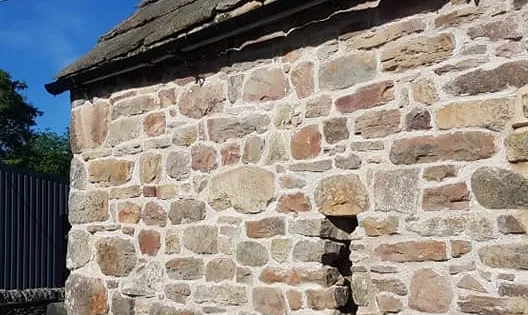The Timeless Craft of Lime Pointing: Preserving the Beauty and Integrity of Historic Structures

Lime pointing, an ancient technique used in masonry construction, has stood the test of time for its durability, flexibility, and aesthetic appeal. Unlike modern cement-based mortars, lime mortar is breathable and better suited for older buildings. In this blog, we’ll delve into the benefits of lime pointing, the process involved, and tips for maintaining structures pointed with lime mortar.
What is Lime Pointing?
Lime pointing involves the application of lime mortar to fill the joints between bricks or stones in masonry. Historically, lime was the primary material used in construction before the advent of Portland cement. Lime mortars are typically made by mixing lime putty or hydrated lime with sand and water.
Benefits of Lime Pointing
- Breathability: Lime mortar is permeable, allowing moisture to evaporate from the masonry, which prevents damp issues and decay in historic buildings.
- Flexibility: Unlike cement, lime mortar can accommodate slight movements in the building structure, reducing the risk of cracks and damage.
- Aesthetic Appeal: Lime pointing has a softer, more natural appearance compared to the rigid look of cement pointing, enhancing the visual appeal of heritage buildings.
- Eco-Friendly: Lime production has a lower carbon footprint compared to cement manufacturing, making it a more environmentally sustainable choice.
- Self-Healing Properties: Lime mortar has the ability to self-heal small cracks through a process called autogenous healing, where lime in the mortar reacts with carbon dioxide in the air to form calcium carbonate, filling the cracks.
The Lime Pointing Process
- Preparation: Begin by removing the old, damaged mortar to a depth of at least twice the width of the joint. Take care not to damage the surrounding bricks or stones.
- Cleaning: Clean out the joints to remove dust and debris. This ensures good adhesion of the new lime mortar.
- Mixing the Mortar: Prepare the lime mortar by mixing lime putty or hydrated lime with well-graded sand and water. The typical ratio is 1 part lime to 2-3 parts sand.
- Applying the Mortar: Dampen the joints to prevent the dry masonry from sucking moisture out of the mortar too quickly. Apply the mortar in layers, ensuring each layer is well compacted.
- Finishing: Once the mortar is applied, tool the joints to the desired finish. This can be a flush finish, recessed, or even a traditional weather-struck finish.
- Curing: Lime mortar requires a longer curing time compared to cement mortar. Keep the pointed area damp for several days to allow the mortar to cure slowly and properly.
Maintenance Tips for Lime Pointing
- Regular Inspections: Periodically check the mortar joints for signs of damage or erosion, especially after extreme weather conditions.
- Repointing: If the mortar shows signs of significant wear or damage, repointing may be necessary. This involves removing the deteriorated mortar and replacing it with fresh lime mortar.
- Avoid Cement: Never repair lime mortar with cement-based products, as they can trap moisture and cause further damage to the masonry.
- Cleaning: Clean lime pointed walls gently with water and a soft brush. Avoid using harsh chemicals or high-pressure washing systems that can damage the mortar.
Conclusion
Lime pointing is a timeless technique that not only preserves the structural integrity of historic buildings but also enhances their aesthetic charm. By choosing lime mortar, you are investing in a sustainable, flexible, and breathable solution that respects the heritage of your property. Regular maintenance and proper care can ensure that your lime-pointed masonry remains beautiful and durable for generations to come.
Whether you are restoring a historic building or maintaining an older home, lime pointing offers numerous benefits that modern materials simply cannot match. Embrace the timeless craft of lime pointing to protect and celebrate the rich history embodied in your masonry structures.